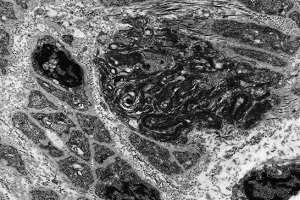Unraveling complex genetic interplay for MS risks

A WA-cohort of patients has been used to study the risk modifying role of specific genes suspected to contribute to one's predisposition to multiple sclerosis (MS).
MS is the most common cause of neurological disabilities in young adults with an estimated 25,000 cases nationwide and a higher prevalence among women than men in most Western countries.
The Australian Neuro-muscular Research Institute's Allan Kermode says this candidate gene selection study is validation research based on previously identified gene-disease associations.
"It needs to be interpreted in the context of other studies done," Dr Kermode says.
Genome-wide association studies may have generated unforeseeable genetic associations but, "their weakness is that they use large groups of patients from diverse geographical and ethnic backgrounds—such patients can contaminate the group".
Dr Kermode says the confirmation of individual gene variation effects on MS development in a highly categorised MS cohort of Anglo-Celtic origin—like the WA cohort, is valuable.
The study also provides evidence for interactive influences of gene combinations not studied before, some of which are described as protective.
"It could well be that certain genes are risk factors in some populations but not others," says Dr Kermode.
"Lots of [immune regulatory] genes associated with MS are common and many people have them, but most of us do not get MS.
"The Human Leukocyte Antigen (HLA)-gene association remains the strongest association with MS risk," and relates to the general understanding that autoimmunity underpins disease progression in this disorder.
But the idea that non-HLA genes contribute in parallel is well established now, supporting Dr Kermode's interest in interactive effects of non-HLA with HLA-genes on MS risk.
He took a subset of the WA MS patients, who were selected for being carriers of the best known HLA-DRB1 risk gene in an Anglo-Celtic population, and studied its interaction with 10 non-HLA genes showing 16 sequence variations in MS patients and controls.
Dr Kermode says it also makes sense to consider interactions of environment stimuli and infections with HLA-genes, defining our immunity.
But their contribution to MS risk is dependent on one's genotype, explaining why some do and others don't develop MS.
He has started using the MS database to further investigate whether MS risk may be affected by vitamin D, as an immune modulator, or Epstein-Barr virus infections, which are 100 per cent prevalent in MS patients.
The inclusion of gene-environment interactions is hoped to improve stratification of MS patients and, in turn, the risk assessment of developing MS.














